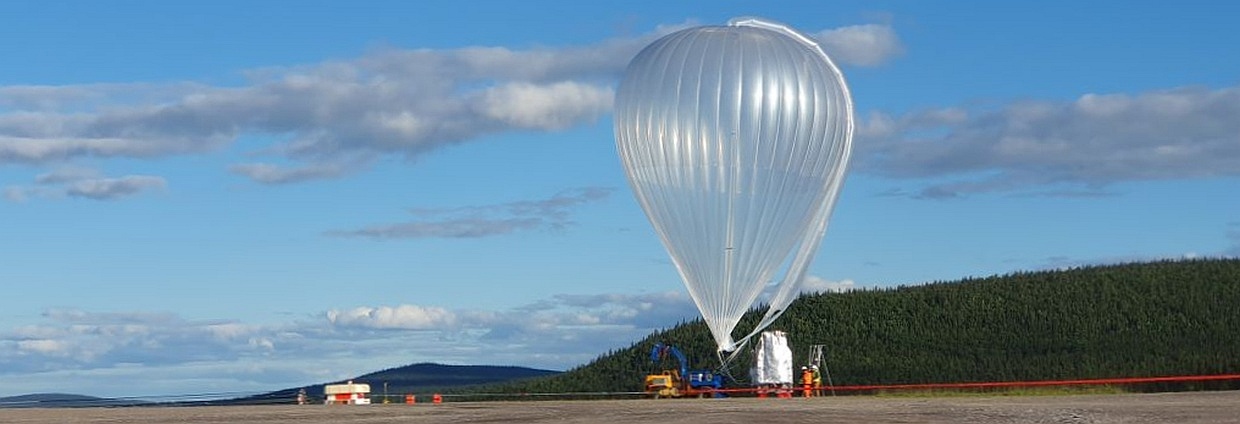TRANSAT 2024

With the launch of a large stratospheric balloon on June 22, 2024, a new chapter began in the research on the composition of the atmosphere at altitudes between 5 and 40 km. The brand-new instrument GLORIA-Lite, developed under the leadership of the Institute of Meteorology and Climate Research (IMKASF) at KIT in close collaboration with the institutes IEK7 and ZEA2 at Forschungszentrum Jülich (FZJ), flew at an altitude of 40 km from northern Sweden (Kiruna) to Canada, crossing over the North Atlantic and Greenland. It landed safely on June 26 on Baffin Island. The FFB group at IMKASF has already conducted over 25 flights with instruments on large balloons, but this was the first transcontinental flight, additionally utilizing the latest version of the instrument.
After the launch by the balloon team of the Centre National d'Études Spatiales (CNES) from the European Space and Sounding Rocket Range (ESRANGE, Swedish Space Corporation), the balloon reached its maximum altitude of 40 km – and its full size with a diameter of about 100 meters. At this altitude, it drifted towards Canada, landing on Baffin Island on June 26. There, the instrument and the treasure trove of data were recovered and can be reused for future measurement campaigns upon its return to KIT.
GLORIA-Lite is a completely newly developed instrument designed to continue the long-term series of measurements by its predecessors GLORIA and MIPAS at IMKASF. The significant reduction in size and weight through the use of the latest infrared sensors, customized electronics and innovative manufacturing techniques also enables the use on transcontinental balloon flights. The heart of GLORIA-Lite is an imaging Fourier transform spectrometer that analyzes the infrared light emitted by more than 20 different molecules and aerosols in the atmosphere and calculates their concentrations. Our goal is to better understand the various dynamic and chemical processes in the stratosphere and to reproduce them in atmospheric computer models. In times of accelerating climate change, it is particularly important to study the impacts on the middle atmosphere and to monitor them through long-term measurement series. For instance, the increasingly frequent and higher-reaching forest fires are also contributing to a change in the entry of air pollution into the stratosphere.
As a demonstrator, GLORIA-Lite also supports the satellite project CAIRT, which builds on the long-standing joint initiative of KIT and FZJ and has been proposed by an international consortium of ESA. CAIRT (www.cairt.eu) reached the "final" in the 2023 selection process, where the "winner" will be determined from the two remaining instrument proposals in 2025, scheduled to be launched into space in the early 2030s.

